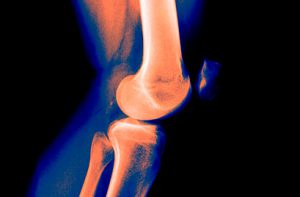Use of CBT Is Widening for Osteoporosis

Use of cognitive behavioral therapy (CBT) is widening as a treatment protocol to reduce pain and improve physical and psychological disabilities in patients with osteoarthritis.
A September 2016 study published in Pain by 2 Duke researchers—coauthors Francis J. Keefe, PhD, a behavioral medicine professor, and David S. Caldwell, MD, a rheumatologist—highlights the benefits of CBT for patients with moderate to high osteoarthritis disease severity. The study is the latest in more than 2 decades of research that has illustrated the potential benefits of CBT based on basic principles from the fields of behavioral and cognitive psychology.
“There is growing evidence that protocols based on principles of CBT can reduce pain and improve physical and psychological disability in patients with osteoarthritis,” Keefe says.
“Over the past 25 years, we and others have conducted numerous randomized control trials documenting the efficacy of systematic training in pain coping skills in patients with knee pain due to osteoarthritis.” The training has few or no side effects at all, Keefe notes—another indication that CBT may be an appropriate alternative to traditional medical or surgical methods.
“This therapy is particularly appealing to an aging population, where comorbidities may preclude medical or surgical alternatives,” states Caldwell.
Long viewed by many health care professionals as a psychosocial intervention therapy, CBT has faced skepticism. However, Keefe says the therapy has earned its place in the clinic.
“The skepticism has decreased considerably over the last 15 years, as practitioners, basic scientists, and pain theorists have learned more about how biological, social, and psychological factors interact to influence the pain experience,” says Keefe. He explains that patients are often referred for these treatments or they may ask their health care professional about CBT.
Training physical therapists in CBT could make the therapy more accessible and more affordable because physical therapy is generally covered by health insurance, Caldwell says.
The study compared treatment responses in different patient subgroups to guide clinical decision making for treatment. Keefe believes CBT can be effective for any painful condition treated by a specialist, but his study findings, he cautions, should be considered in a larger context.
“I believe we identified some tentative predictors of outcome but recommend we hold off on routinely basing clinical recommendations on this 1 study,” Keefe says. “We would like to see these results replicated in several more studies.”